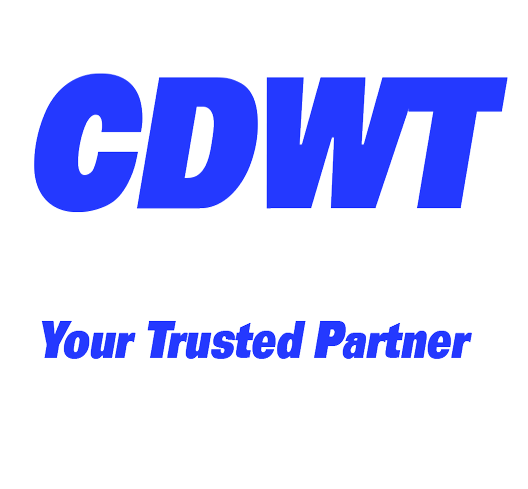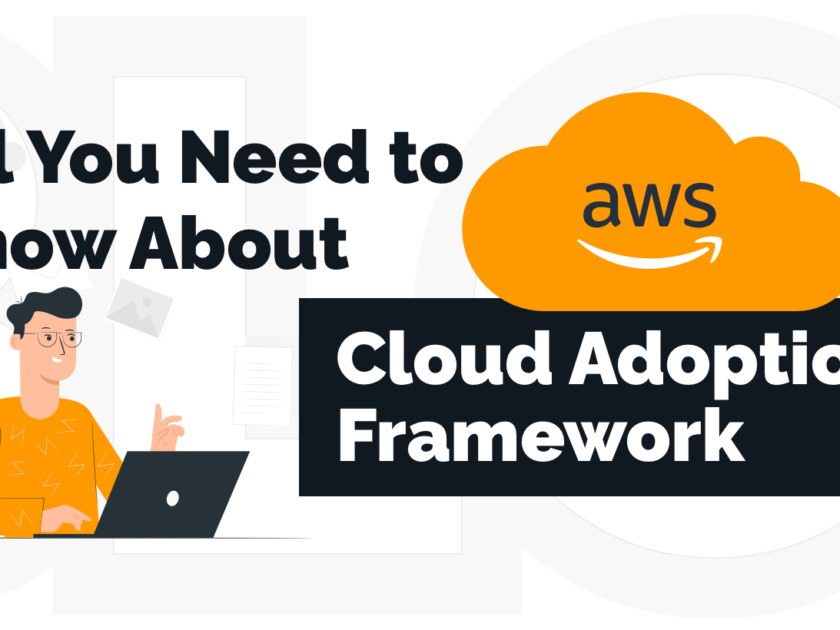Identify important steps and objectives to constantly improve your cloud journey: Utilize the Cloud Adoption Framework to transition to Amazon Web Services
The economic, organizational, and societal impact of the pandemic will continue to serve as a catalyst for digital innovation and the adoption of cloud services
An effective action plan for cloud adoption would aid enterprises in migrating to the cloud more quickly, achieving the intended results, and avoiding the typical barriers. AWS Cloud Adoption Framework (AWS CAF) is a template for adopting, adapting, configuring, and sustaining IT workloads, databases, and assets on the AWS Cloud.
Within the next three years, 95% of all business workloads will be hosted on the cloud.
Over one-third of organisations exceed their cloud budget by up to 40%.
Vision, future goals, budget, infrastructure, organisational structure, and compliance regulations are just a few of the aspects that must be taken into consideration for any company’s trip to the cloud. AWS CAF is a blueprint for moving, configuring, and sustaining IT workloads, databases, and assets on the AWS Cloud. It expedites the cloud migration and modernisation process. To meet their long- and short-term IT and business objectives, businesses may simply identify crucial activities and objectives, such as mission-critical assets, applications, and databases to move. With CDWT, the world’s leading application-focused Cloud MSP and an AWS Advanced Consulting Partner, you will integrate the right stack of native tools and services for end-to-end monitoring, asset management, and security and streamline the AWS transformation journey using the AWS Cloud Adoption Framework (CAF).
AWS Cloud Adoption Framework: CDWT’s Implementation
CDWT 20-50% more will be spent by organizations who are ignorant of the errors made during cloud deployment.
AWS CAF enables you to establish the optimal migration approach based on your organization's needs and to construct an all-encompassing plan with accurate ROI estimations. In addition, CDWT assists in the deployment of intelligent cost optimization and automation technologies to better manage cloud workloads in terms of agility, availability, and TCO savings.
Our team of professionals will create an all-encompassing plan for your cloud journey, including Discovery, Assessment, and Migration. In addition, we assist businesses in identifying the optimal approach based on their unique business use cases, ranging from "which workloads to migrate" to "how to migrate them cost-effectively."
Offerings of our AWS Cloud Adoption Framework
Migration Assessment
Examine and evaluate preparedness, identify and engage key stakeholders, connect business and technology, and construct a business case
Migration Planning
Perform comprehensive investigation, construct a migration strategy, design an operational model, and assure security and compliance
Migration & Operations
Migrate, integrate, test, convert, monitor, optimise, and innovate for ongoing development and optimum outcomes
AWS Cloud Adoption Framework : A Comprehensive Map
Strategy
Plan
Ready
Adopt
Manage
Govern
AWS Cloud Adoption Framework Powered By CDWT : Benefit that you can Expect
Rapid Cloud Decision Making
Gain access to a factory-based approach to cloud deployment and accelerate the cloud migration process. By defining the proper business case and migration strategy, CDWT identifies the required tools and services and executes cloud migration under stringent time constraints. This provides for constant availability, agility, and zero data loss, regardless of the size or complexity of the landscape.
Cost Clarity and Management
AWS Cloud Migration Framework is a cost-effective cloud framework because it incorporates CDWT's intelligent cloud cost optimization algorithms to cut needless expenditures without sacrificing quality or security.
Dependence, Exploration, and Planning
Activities like as technical assessments, hardware/software evaluations, and mapping of application dependencies are undertaken to increase the likelihood of a smooth and seamless cloud migration. AWS CAF focuses on the cloud-readiness of your application's data and infrastructure in order to guarantee optimal outcomes.
Security
AWS Security and the AWS Firewall in conjunction with CDWT's Self-Healing Operations Platform (SHOP) improve infrastructure security. Auto-remediation and self-healing provide organisations with end-to-end cloud migration, modernisation, and managed services automatically and with minimum human intervention.
CDWT's Optimized Native Cloud-Environment
Cloud Adoption Framework assists firms in using AWS-native technologies and finding the most effective ways to streamline operations.
Availability and Scalability
AWS CAF guarantees your business enjoys 99.9% uptime and scalability with AWS cloud up to the Application Login layer.
Comprehensive Compliance Management
AWS CAF will also conduct a comprehensive review of your organization's compliance practises and provide a report outlining any necessary adjustments. In addition, CDWT's enhanced managed capabilities offer: Built-in, platform-specific compliance tools Features of configuration management Guidance sources that might prevent fines and penalties
This phase enables stakeholders to comprehend the business effect and anticipated business results of cloud adoption.
Step 1: Understanding the rationale for cloud migration
A team of migration specialists from CDWT will evaluate the enterprise’s business, present landscapes, and workloads in order to assist them categorise the motives into three groups.
Critical Business Events Or Decisions
- Datacenter Exit
- Mergers & Acquisitions
- Reduce Capital Expenses
- End of Support (EoS) of Mission Critical Technologies
- Regulatory Compliance changes
Migration Triggers
- Cost Savings
- Reduce Vendor or Technical Complexity
- Optimize Infra and Operations
- Increase Business Agility
- Scale to meet Market or Geo-specific demands
Innovation Triggers
- Ace Customer Experience
- Transform Products or Services
- Disruptive Innovation(s)
- Build New Technical Capabilities for Sustainability and/or for a Competitive Edge
Step 2: Determine Business Results
CDWT involves diverse stakeholders and records intended cloud adoption results. The most typical outcomes expected by clients at this stage are:
FISCAL
AGILITY
Performance
SECURITY & COMPLIANCE
REACH & CUSTOMER ENGANGEMENT
Step 3: Organizational Justification
The migration specialists at CDWT can assist businesses in developing a business case for the cloud. A smooth and uncomplicated migration to the AWS cloud provides depreciation savings, physical asset recovery, operating cost reduction, cost avoidance, soft-cost reduction, staff reductions, and capital expenditure reductions or avoidance.
Step 4: Select Your Initial Project
CDWT assists businesses in selecting their first project by providing them with well defined criteria and a list of desired business results.
The primary function of cloud adoption is to make organisations’ cloud adoption strategies a reality. With the aid of the cloud adoption strategy, CDWT’s team of specialists assists businesses in performing the necessary technical activities to achieve the intended business outcomes.
Step 1: Rationalize Digital Estate
Here, crucial choices about an asset’s rehosting (life and shift) or retirement are made.
Step 2: Prioritize and define workloads
Prioritized are the first ten workloads that will generate an initial adoption backlog.
Step 3: Align assets
Identified are the assets (planned or existent) necessary to support the priority workloads.
Step 4: Examine Rationalization
The first-step rationalisation choices are improved for adoption-path decisions: Migrate or Innovate.
Step 5: Estimate Timelines
Initial estimations are used to define approximate release planning deadlines.
Step 1: Prepare the Ambient Conditions
Before designing and delivering solutions, prepare the cloud environment. The AWS Readiness Guide provides guidance on organising resources, limiting expenditures, and protecting and managing an organization’s resources in order to assist them in establishing a landing zone. The landing zone is the supplied environment for hosting workloads transferred from an on-premises system to AWS.
Step 2: Expanding the Landing Zone Blueprint.
There are three types of factors to consider while designing a landing zone.
- Hosting – Decisions about computation, storage, networking, and databases to offer hosting alternatives in the touchdown zone. blueprint
- AWS Fundamentals – These are the fundamental building elements for arranging cloud-based resources.
Governance Considerations – Implementation of governance principles at each landing zone
Step 1: Intuitive choice and creativity using the 6Rs
Several cloud-native features might be advantageous to older applications when the system is upgraded to their benefit. CDWT facilitates selection among the renowned 6Rs. What exactly are they?
REPURCHASE
The organisation abandons its on-premises software licence and migrates to the cloud-based version of the same software, repurchasing the licence.
REHOST
Identifying the apps and current workloads to be transferred and lifting and shifting them to the cloud environment is the purpose of this step.
REPLATFORM
This procedure is identical to that used for rehosting platforms and apps. In this step, however, changes are done to guarantee that cloud-based systems operate properly.
REFACTOR/RE-ARCHITECT
Existing on-premises programmes, databases, and workloads are reworked extensively, typically at the coding level, in order to migrate them to the cloud. This phase or strategy requires the greatest effort and expenditure.
RETIRE
This entails identifying duplicate apps or platforms that are producing needless strain and driving up operating expenses. They may be decommissioned and replaced with a version that is more cloud-friendly.
RETAIN
Businesses may choose to keep certain old, on-premises apps if they offer excellent performance and are integral to mission-critical initiatives.
The AWS governance evaluation maps the customer’s complete network, systems, and applications to guarantee scalability, high performance, and resilience, as well as compliance.
The following actions are taken to attain the same result:
- Document business risk and risk tolerance
- Define policies and develop procedures for monitoring infractions.
- Monitor costs and establish cost responsibilities
- Make every attempt secure by design
- Enforce identity and access policy with the correct RBAC
- Drive and emphasise consistency and uniformity




